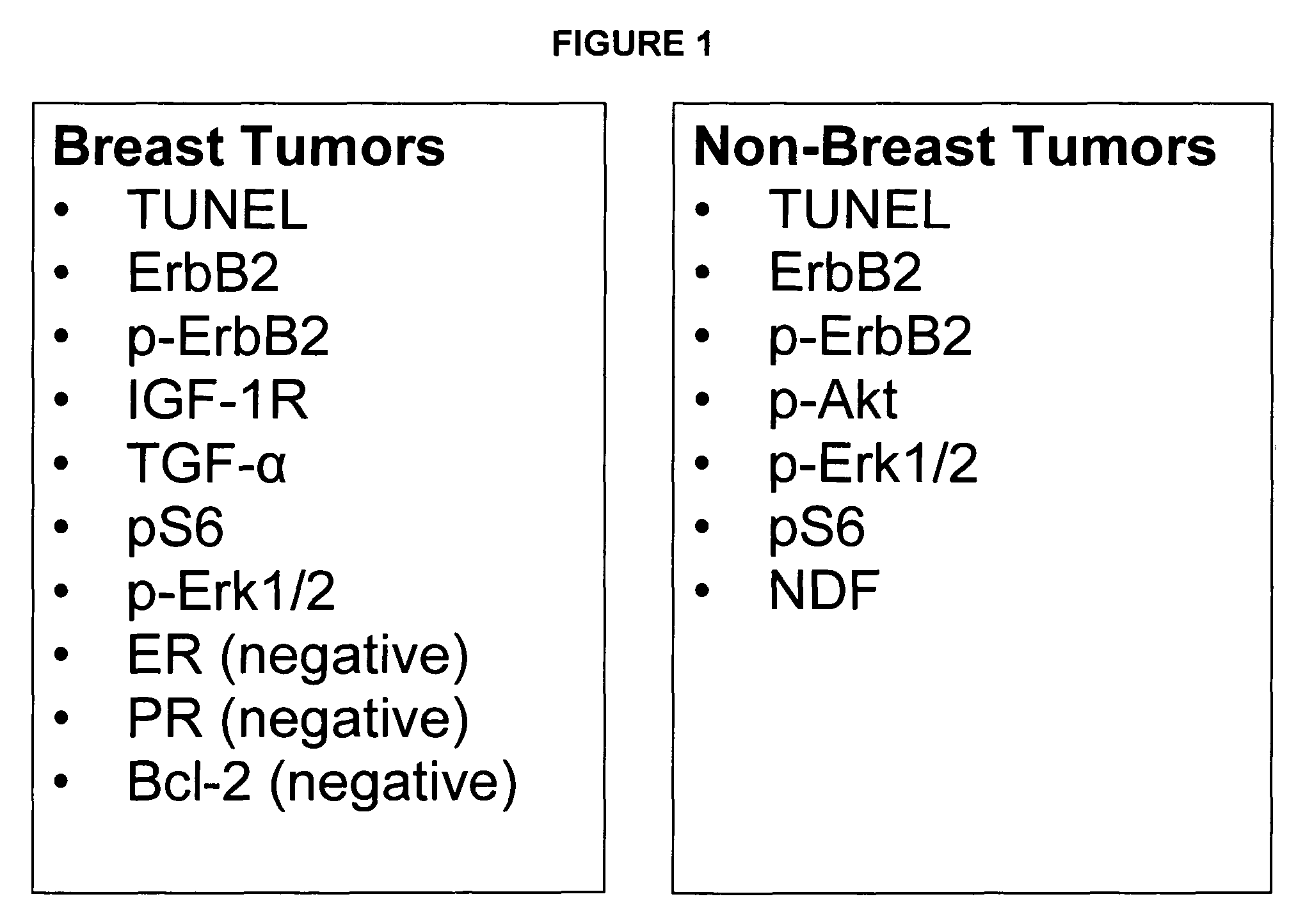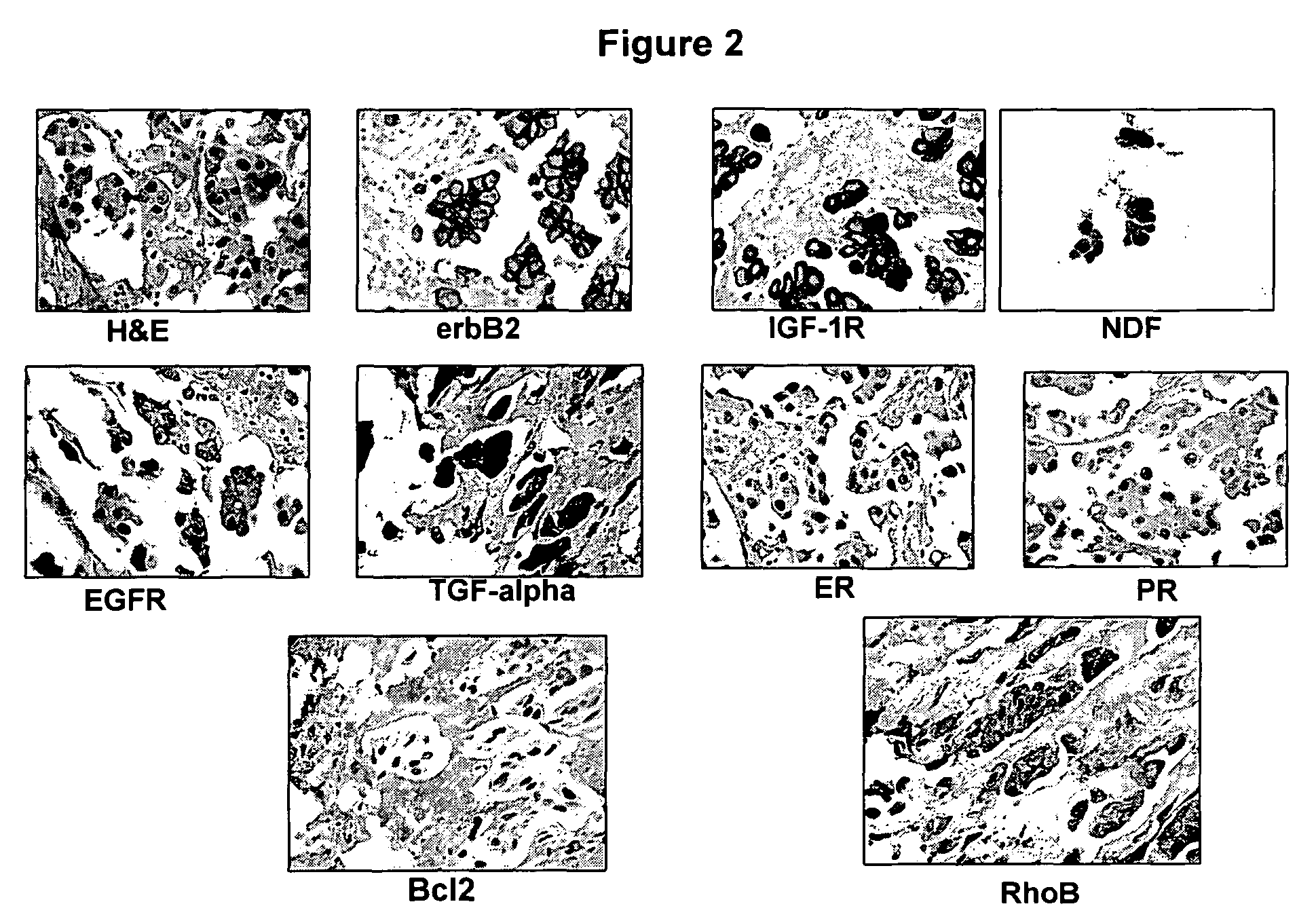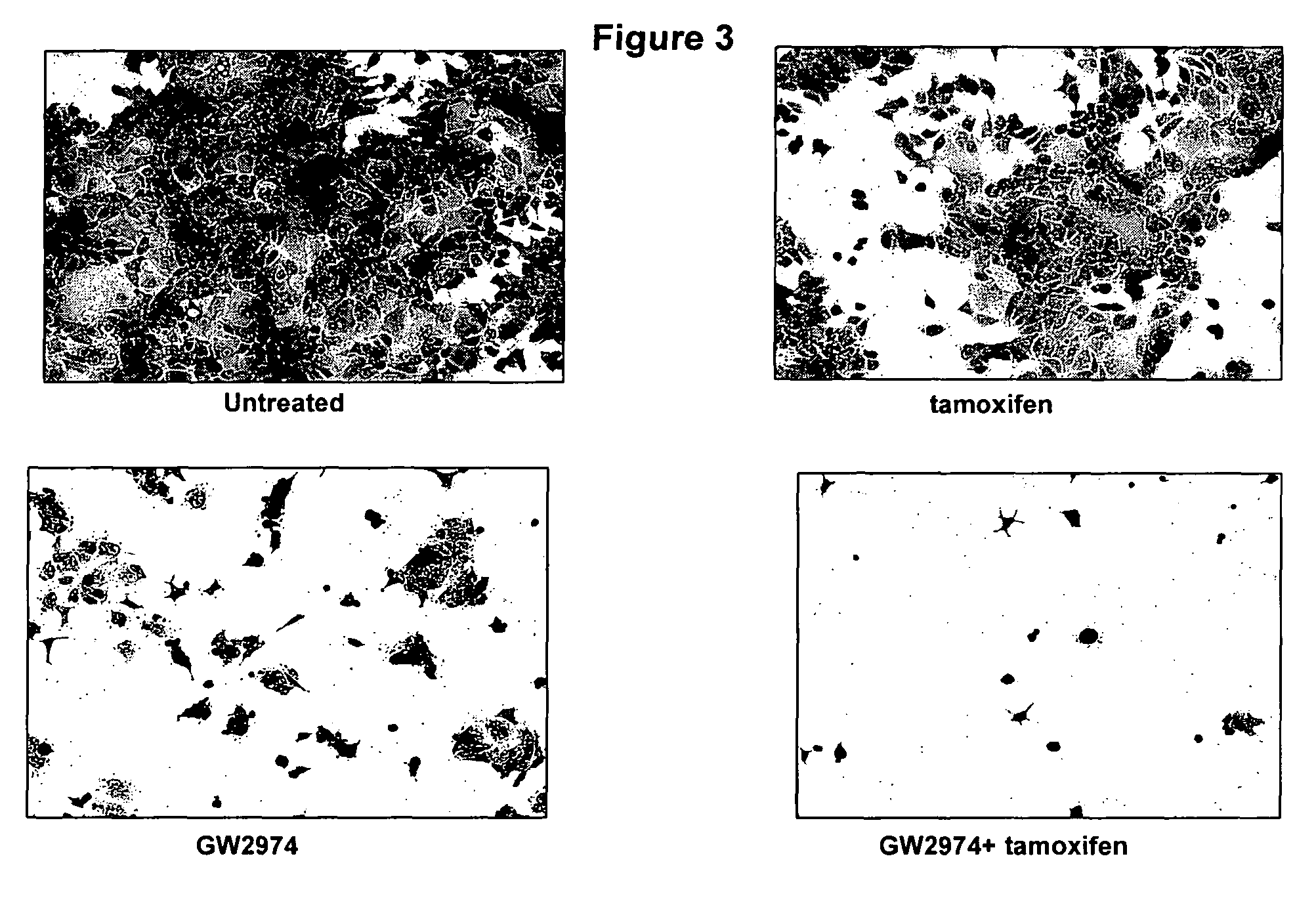Methods and materials for predicting responsiveness to treatment with dual tyrosine kinase inhibitor
a technology of tyrosine kinase inhibitor and responsiveness, which is applied in the direction of peptide/protein ingredients, peptide sources, instruments, etc., can solve the problems of tumor burden, inability to treat tumors located in other areas, and increase tumor cell number, so as to reduce the average survival time and avoid potential side effects of treatment
- Summary
- Abstract
- Description
- Claims
- Application Information
AI Technical Summary
Benefits of technology
Problems solved by technology
Method used
Image
Examples
example 1
Panel Assay Involving TGF-α, HRG, IGF-1R, ER, PR, EGFR, erbB2 and Bcl-2 Staining
[0148]Biopsy samples are obtained from two different subjects with invasive breast carcinomas. Each subject providing a sample is treated, for example with taxotere and a small molecule dual inhibitor of EGFR / erbB2. Biopsies samples are fixed in 10% Neutral Buffered Formalin (NBF) and paraffin-embedded sections are prepared. Hemotoxylin and eosin (H&E) staining are used to confirm the presence of tumor in the biopsy samples. Quantitative immunohistochemistry (“IHC”) analysis is performed as described in Bacus, et al., Analyt Quant Cytol Histol, 19:316-328 (1997), which is herein incorporated by reference. In addition, EGFR and erbB2 immunostaining are performed using VMSI automated “BenchMark” staining module, also as described in Bacus, et al., Analyt Quant Cytol Histol, 19: 316-328 (1997). The VMSI “I-View” detection kit is used for both of the VMSI pre-diluted primary antibodies. TGFα (1:20) is immuno...
example 2
Validation of Inclusion of Hormone Receptors in a Panel of Targeted Therapy Markers
[0150]A breast tumor tissue sample obtained from a patient prior to treatment was stained using standard IHC techniques. IHC staining showed increased levels of HER2 / neu and negative expression of ERα, PR and Bcl-2, relative to expression levels of HER2 / neu, ERα, PR, and Bcl-2 in normal, non-cancerous tissue. See FIG. 16.
[0151]The patient responded to therapy using a dual EGFR / HER2 inhibitor (e.g. HERCEPTIN®, Genentech, Inc. (San Francisco, Calif.). A tissue sample was obtained from the same patient following treatment with the dual EGFR / HER2 inhibitor and stained using standard IHC techniques. IHC staining showed increased levels of HER2 / neu as well as slightly increased levels of ERα, PR, and Bcl-2. See FIG. 16.
[0152]This expression profile validates inclusion of hormone receptors in a panel of targeted therapy markers. Initial ErbB signaling repressed the ER pathway, which explains the decreased le...
example 3
Determination of PCD Using TUNEL
[0153]One method for detecting PCD in a tissue sample is commonly referred to as the “TUNEL method.” In this method, the 3′ ends of the DNA fragments generated in apoptotic cells are labeled with biotin-coupled uridine (dUTP) using the enzyme terminal deoxynucleotidyl transferase (TdT). The biotin label is then detected with enzyme tagged streptavidin or avidin, which binds to biotin. When the colorless substrate of the enzyme is added to a tissue section or cell culture, it is reacted upon to produce a colored precipitate only in cells that have undergone apoptosis. See FIG. 15.
[0154]All TUNEL solutions and staining reagents used in the present invention were purchased from Roche. Paraffin-embedded tissue clinical samples were dewaxed and rehydrated by heating at 60° C. followed by washing in xylene and rehydration through a graded series of washes with ethanol and double distilled water. Samples were incubated for 15-30 min at 21-37° C. with Protein...
PUM
| Property | Measurement | Unit |
|---|---|---|
| time | aaaaa | aaaaa |
| OD | aaaaa | aaaaa |
| pH | aaaaa | aaaaa |
Abstract
Description
Claims
Application Information
 Login to View More
Login to View More - R&D
- Intellectual Property
- Life Sciences
- Materials
- Tech Scout
- Unparalleled Data Quality
- Higher Quality Content
- 60% Fewer Hallucinations
Browse by: Latest US Patents, China's latest patents, Technical Efficacy Thesaurus, Application Domain, Technology Topic, Popular Technical Reports.
© 2025 PatSnap. All rights reserved.Legal|Privacy policy|Modern Slavery Act Transparency Statement|Sitemap|About US| Contact US: help@patsnap.com



